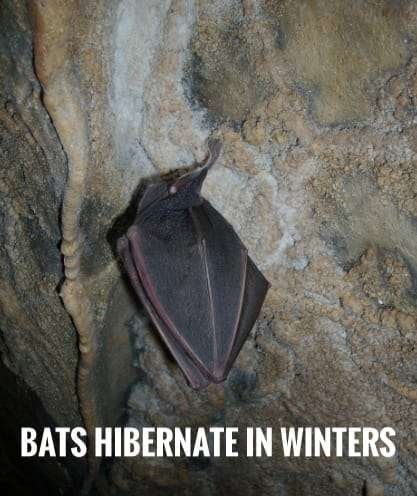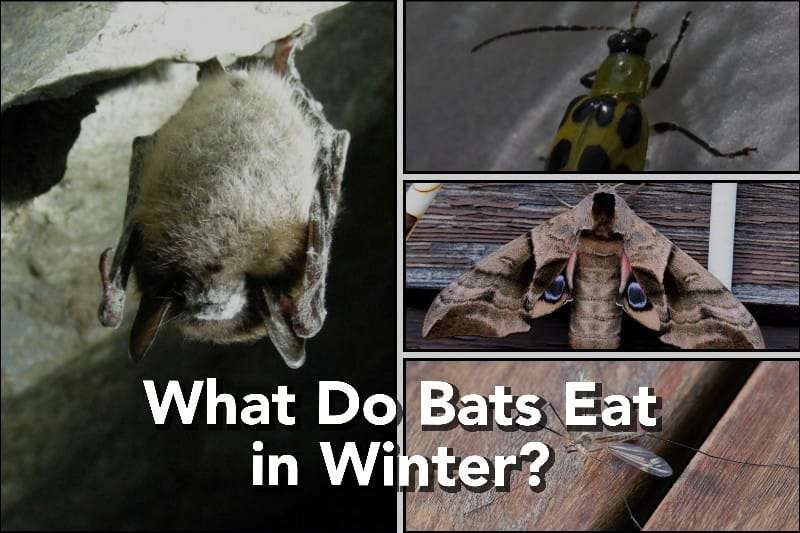Winters become a rough patch in the life of every animal. Devoid of liveliness and food, each organism has its respective ways of coping with this still season. Since the winters have already set foot, many people have a query, What do bats eat in winter? Or what is their winter diet?
To answer this question, the lack of food during winter is a serious issue for bats in the Northern Hemisphere. Bats fly to warmer climates or hibernate during the winter to survive this time of famine. They do not eat anything during winter and use their stored food reserves.
Later in this post, “What do Bats Eat in Winter?” we are going to discuss bats in winter and what are their winter diets. So without much ado, let us get things rolling.
What Do Bats eat in Winter?
Bats must eat a lot of food, such as insects, to support their daily activities because they expend a lot of energy, as flying is an energy-expensive activity. During winters, insects are driven away by cold weather.
Due to the lack of enough food, bats either hibernate or migrate to some warmer place with a comparatively abundant food source. And because of the shortage of food supply, bats fatten themselves up during the fall, before the onset of winter. Winter months witness almost negligible feeding by bats.
During fall, bats consume insects a lot more than at normal times. Their diet comprises insects of various kinds, ranging from mosquitoes to caddisflies, mayflies, moths, stoneflies, beetles like cucumber beetles, and hoppers of several species.

They hunt using echolocation, and any flying insects become prey. Bats may eat anywhere between 600-4,000 insects in one night, depending on the bat species.
Food intakes done during the fall accumulate in their bodies as fats, which bats use up during the winter months. While hibernating, bats metabolize these stored foods, which keep them alive when no there is no feeding.
How do Bats eat in Winter?
Bats do not feed during winter unless they migrate to a warmer climate with an abundant food supply. During winters, bats hibernate for months without coming out.
During these months, they use their stored food reserve. Energy is needed for basic life processes like breathing, circulation, etc. By lowering their body temperature, bats conserve a lot of energy.
Enzymes break down the fat into ATP, the energy currency of the cell. These ATPs fuel a bat’s several activities, which help it to overcome harsh climatic conditions.
Bats slowly metabolize the fat, and by regulating several body activities, they manage to sustain themselves throughout the winter.
Do Bats Hibernate in Winter? If yes, how long?
When it turns chilly, bats have nothing to eat in the way of insects, pollen, nectar, or fruit. To survive, bats that reside in regions with harsh winters must relocate to warmer climates or hibernate. They might hibernate solitary or in packs. Most North American bat species hibernate.

Bats hibernate during the month of November and might not come out of it entirely until mid-May.
Hibernation entails a drastic decrease in metabolic, cardiac, and respiratory rates, which enables a bat to go for extended periods without eating. A bat’s heart rate decreases from 200–300 to 10 bpm (beats per minute), and it may go for several minutes without breathing.
Depending on the surroundings’ temperature, the body temperature of the bat can also fall to almost freezing. Additionally, other biological processes slow down, and this reduces energy consumption by almost 98%. This stage is known as the “torpor” stage.
Bats that are hibernating go through cycles of torpor and brief awakenings when their body temperatures recover to normal for a few hours.
Certain species, like the small brown bat, may hibernate for many months while they wait for the springtime reemergence of insects. Bats select areas with the perfect temperature and humidity for hibernation, such as mines, old caves, and rock fissures.
Bats hibernate till the weather conditions restore to normal and food outside is plentiful. Their winter slumber may last for as long as six months in most hibernating bat species.
Do Bats Hibernate in attics?
Hibernacula, or designated locations where bats hibernate, include caves, mines, crevices in hillsides, and certain trees. Bats that live in cities may decide to hibernate nearby.
In that case, your shed, attic, or barn serves to be ideal locations. Bats adapt to city life without much difficulty. As a result, they are much more likely to choose a chimney, vent, or piece of siding as their hibernaculum than a cave.
Due to their diminutive size, bats do not require massive areas to roost. They gain access to attics via cracked or broken windows or screens, rotting wooden planks, or splits.
Once bats enter their hibernation stage, it will be almost impossible to remove them from your attic for the next 5-6 months.
Now, we come to the end of this article, “What do bats eat in Winter?” We will be bringing many interesting facts about bats shortly, so stay tuned.
References
National Park Service- All About Bats- Hibernate or Migrate
Critter Control- Do Bats Hibernate?
Also Read:

A zoology student turned writer. Nature has always been a magnet to me, and to unearth some of its secrets through my articles is my prime intention. If not engaging myself with nature and anime content, you can always find me going through some Bengali classics or filling the air with some soulful Tabla beats. An artist, trying to throw some colors to my blank canvas of life.
